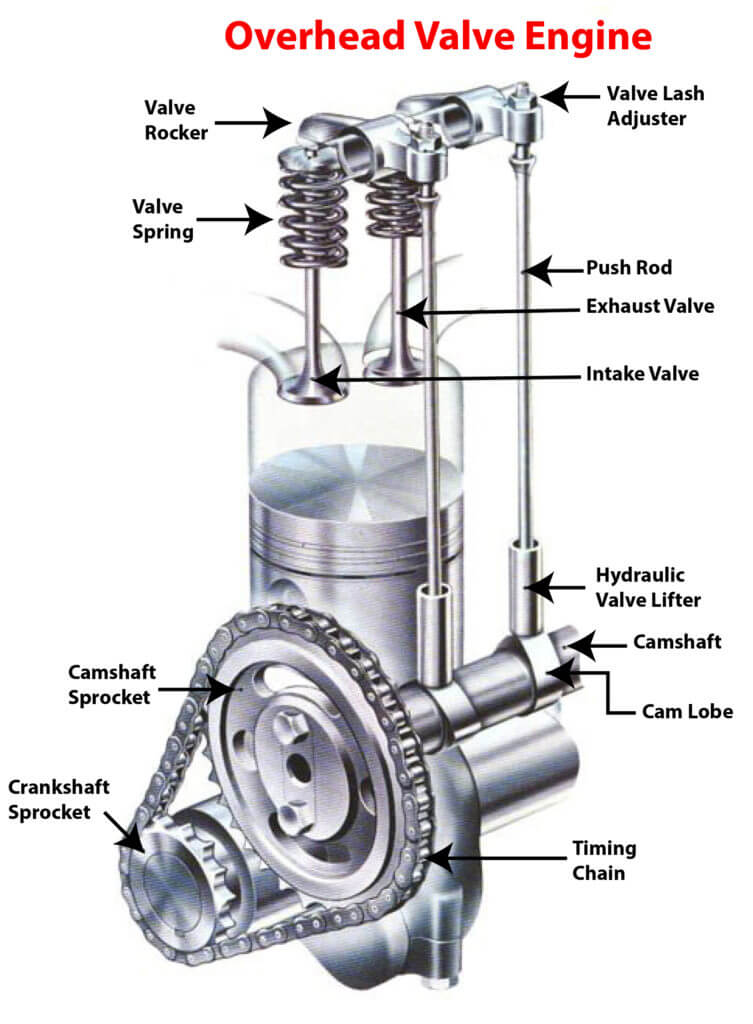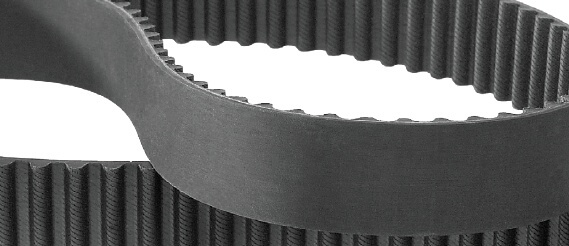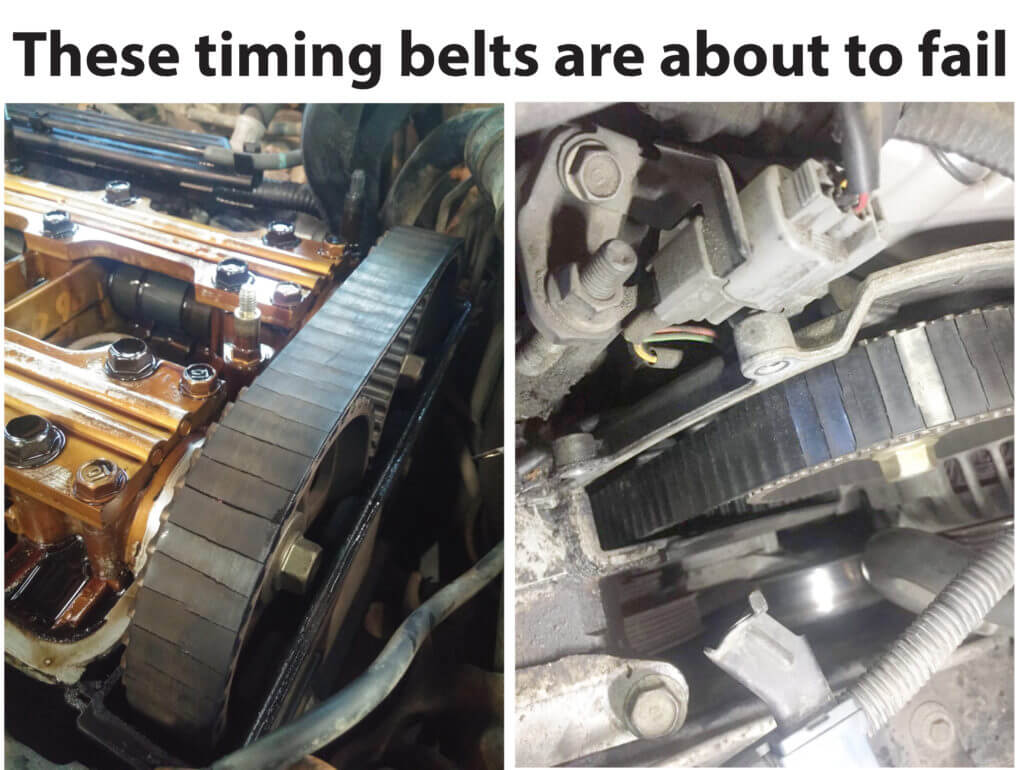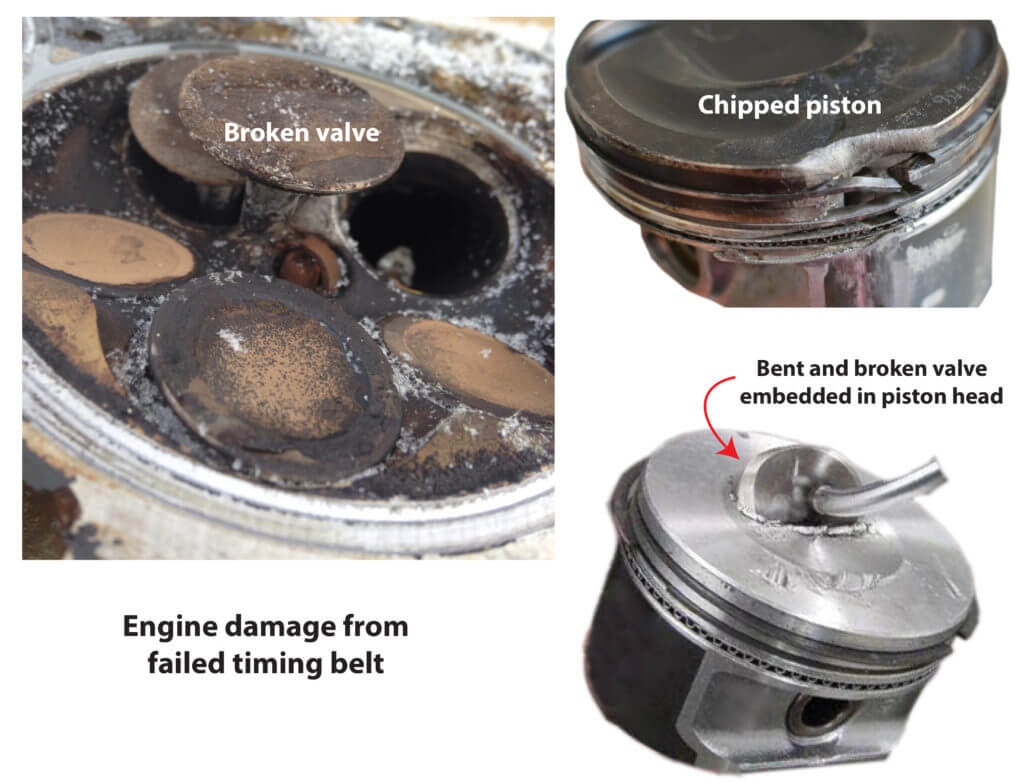Interference engine
What is an interference engine?
In the most simple terms, an interference engine is one where the intake and exhaust valves are designed to open wider and sooner than in a non-interference engine. An interference engine can breathe better and provide greater fuel efficiency because of this design. However, the crankshaft and camshaft must be perfectly timed so the valves start closing before the piston reaches the height of its travel. If the camshaft ever gets out of time due to a broken or damaged timing belt or a stretched timing chain, the piston can come into contact with the valves, causing catastrophic damage.
The role of the timing belt or timing chain
The crankshaft and camshaft must rotate in exact sequence with  each other. In older push-rod engines, also called overhead-valve (OHV), the camshaft was located in the middle of the engine. Carmakers used either a timing chain or timing gears to like the crankshaft and camshaft. In those engines, the camshaft raised and lowered valve lifters which then moved pushrods to open and close the valves located at the top of the cylinder heads.
each other. In older push-rod engines, also called overhead-valve (OHV), the camshaft was located in the middle of the engine. Carmakers used either a timing chain or timing gears to like the crankshaft and camshaft. In those engines, the camshaft raised and lowered valve lifters which then moved pushrods to open and close the valves located at the top of the cylinder heads.
Pushrod engines lost some efficiencies due to the movement of so many parts. So carmakers switched to overhead cams where the camshaft is mounted above the valves, eliminating push rods entirely. Locating the camshaft above the valves greatly increased the distance between the camshafts and the crankshaft so engineers used a timing belt to move the two rotating shafts.
Advantages and disadvantages of a timing belt
A timing belt is less costly than a timing chain and runs much quieter than a chain. It also doesn’t require lubrication like a chain that eliminates the need for a timing belt cover gasket. But unlike a timing chain, timing belts don’t last the life of the engine and must be replaced at regular intervals. The rubber used in timing belts deteriorates over time and can break if not changed at recommended mileage. In an interference engine application, a broken timing belt can result in major engine damage costing thousands of dollars.

How long does a timing belt last?
That depends on the engine design. On some engines, the timing belt must wrap around multiple idler pulleys which causes higher operating temperatures. Those higher temperatures cause accelerated wear. That’s why some engines require timing belt replacement at 60,000 miles while others require replacement at 120,000 miles. In addition to the design, coolant and oil leaks can cause early belt deterioration and failure.

Not all timing belt engines are interference designs. If a timing belt fails in a non-interference engine, the engine will die, but not incur mechanical damage.
For more information on when to change your timing belt, see this post
Examples of engine damage from a failed timing belt

©, 2020 Rick Muscoplat
Posted on by Rick Muscoplat
